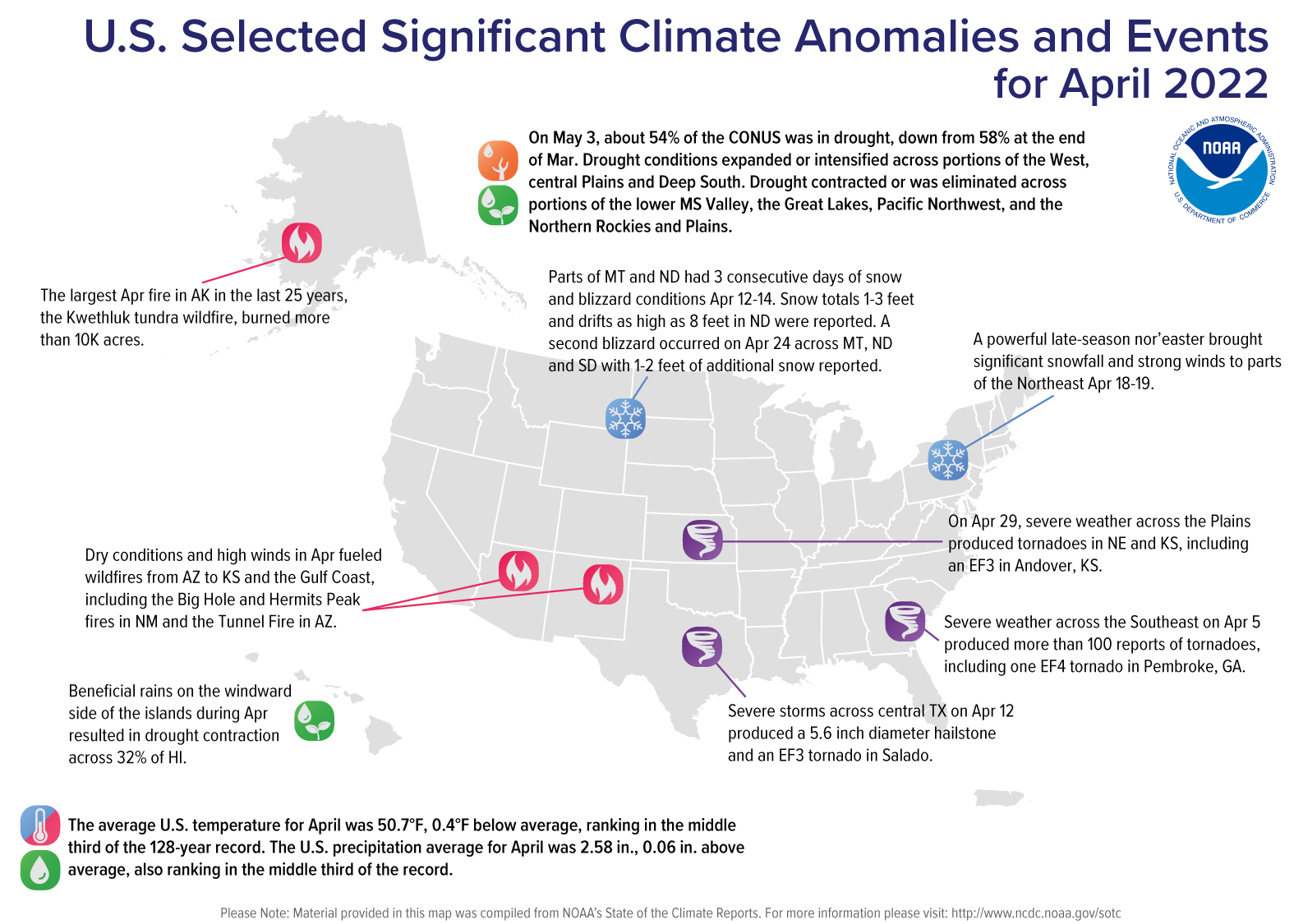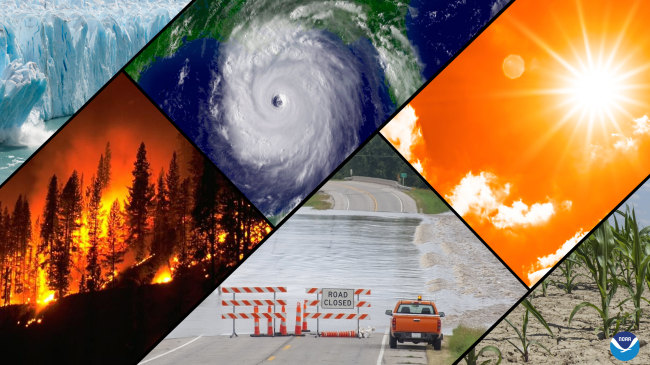The U.S. saw near-average temperatures and precipitation

Wildfire activity associated with the New Mexico Hermits Peak Fire on the evening of April 29, 2022, off of Highway 518. The fire saw significant growth that day. (Image credit: Will Harris/Inciweb)
April 2022 was slightly cooler and wetter than normal across the contiguous U.S., according to the National Centers for Environmental Information.
What made the month standout was an early start to the wildfire season, several tornado outbreaks and a widespread Western drought.
Below are more takeaways from NOAA’s latest monthly U.S. climate report:
Climate by the numbers
April 2022
The average April temperature across the contiguous U.S. was 50.7 degrees F (0.4 of a degree below the 20th-century average), ranking in the middle third of the 128-year record.
Temperatures from the Northwest to the Great Lakes and into the mid-Mississippi Valley were generally below average, while much of the Southwest, Deep South and portions of the East Coast saw above-average temperatures.
The average precipitation for the month was 2.58 inches — 0.06 of an inch above average — which places the month in the middle third of the historical record.
Above-average precipitation fell across portions of the Northwest, northern Rockies and Plains, Great Lakes and Northeast, while the Southwest and the central and southern Plains saw below-normal precipitation.
Year to date
The average U.S. temperature for the year to date (YTD, January through April 2022) was 39.9 degrees F (0.8 of a degree above average), ranking in the warmest third of the climate record. Temperatures were above average across parts of the West and also along the East Coast, with California seeing its sixth-warmest such YTD on record.
The average precipitation for the first four months of 2022 was 8.25 inches (1.22 inches below normal), which ranked as the 13th-driest January-through-April YTD on record. California had its driest YTD on record for this four-month period, while Nevada and Utah had their third driest.

Other notable climate events in April
- Wildfire season kicked off early: Dry and windy conditions across the Southwest and Plains contributed to an active start to the wildfire season in April. As of May 3, the largest fire across the U.S., the Hermits Peak Fire in New Mexico, consumed more than 145,000 acres and was 20% contained. Across all 50 states, 1.1 million acres have burned since January 1— 160% of average for this time of year.
- Tornadoes were numerous: Several tornado outbreaks occurred during April, contributing to an above-average tornado count for the month. A days-long outbreak in early April brought tornadoes and severe weather from the Dallas/Fort Worth, Texas, metro area to the Carolinas. Another outbreak mid-month struck the Great Plains, Midwest and Deep South, with another round of severe thunderstorms and tornadoes raking the central Plains on April 29-30.
- Drought conditions improved overall: According to the May 3 U.S. Drought Monitor report offsite link, 53.8% of the contiguous U.S. was in drought, down approximately 4 percentage points from the end of March. Drought conditions expanded or intensified across portions of the West, central Plains and Deep South. Drought conditions lessened or were eliminated across portions of the lower Mississippi Valley, the Great Lakes, the Northern Rockies and Plains, Pacific Northwest and across portions of Hawaii.
More > Access NOAA’s latest climate report and download the images.
Media contact
John Bateman, john.jones-bateman@noaa.gov, (202) 424-0929




